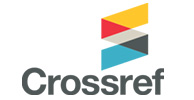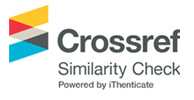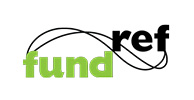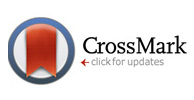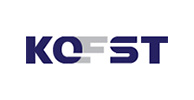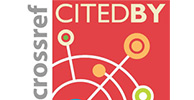The genus PachygronthaGermar, 1837 belongs to the family Pachygronthidae (Heteroptera: Lygaeoidea), which includes more than 40 species worldwide. It is the largest genus within the subfamily Pachygronthinae and can be classified into several species groups (Slater, 1955). Also, this genus is the only subfamily genus found in the Eastern and Western Hemispheres (Slater, 1955).
The genus Pachygrontha, with nine and six species in China and Japan, respectively, in Korea only one species with two subspecies P. antennata antennata and P. antennata nigriventris is recorded (Lee, 1971;Zheng and Zou, 1981;Kwon et al., 2001;Péricart, 2001;Hayashi et al., 2016;Cho and Kwon, 2017).
P. antennata antennata (Uhler, 1860) and P. antennata nigriventrisReuter, 1881 were classified as subspecies by Slater in 1955. These subspecies are identified by the first antenna segment length and pronotum length or width, but, females are indistinguishable (Slater, 1955). They inhabit grass fields near agricultural areas and mainly feed on Poaceae, and are known as one of the pests that cause pecky rice (Lee et al., 2009;Kang et al., 2019;Hwang et al., 2023).
In this study, we report the species Pachygrontha similisUhler, 1896 for the first time from the Korean Peninsula. We provide descriptions, diagnoses, and photographs of the P. similis adult specimens and genitalia, with a taxonomic key to the species of Korea.
Materials and Methods
Details of the method of genital dissection mainly follow Malipatil et al. (2020). Terminology of genitalia mainly follows Yang (2007).
Adult specimens were photographed using a Laowa 25 mm ultra-macro lens and a Canon EOS 90D.
The examined specimens and genitalia were dissected under a microscope (Leica M165C). Images of the genitalia were captured using a digital camera (Leica DMC2900) and a capture program (Leica Application Suite version 4.12.0).
Results
Genus PachygronthaGermar, 1837
PachygronthaGermar, 1837: 152-153.
AtractophoraStål, 1853: 260 (syn. Stål, 1865: 146-148).
PeliosomaUhler, 1860: 229 (syn. Stål, 1874: 139-141).
Dilophos Montrouzier in Perroud and Montrouzier, 1864: 226 (syn. Stål, 1874: 139-141).
Diagnosis: Body elongate and slender, general coloration ochraceous. Antennal segment I greatly long (male longer than female) and apex incrassate. Pronotum and scutellum with black punctures. Lateral margin of hemelytra non-explanate. Fore femora incrassate with denticulate. See Slater (1955) for detailed diagnosis.
Pachygrontha similisUhler, 1896 닮은더듬이긴노린재 (신 칭)(Fig. 1, 2, 3, 4, 5)
Pachygrontha similisUhler, 1896: 264. Type locality: Japan (Froeschsner, 1999).
Diagnosis. General coloration pale brown. Antennal segment III pale yellow contrasting with segment IV. Connexival tergites with black markings on segment V, VI and VII.
Description. Body (Fig. 1) elongate and pale brown. Head dark brown with appressed hairs and punctures. Eye prominent more than anterior pronotum. Labium unreached midcoxa. Antennae infuscate; segment I brown with dark brown calli of apex; segment I and II brown, segment III pale yellow (sometimes, base brown), segment IV dark brown; segment I longer than other segments, segment IV shortest (male antennae longer than female). Pronotum pale brown, covered black punctures; center of anterior pronotum with pale stripe and each side a pair of large black markings. Scutellum black, covered black punctures with carinate pale Y-shaped. Hemelytra transparent. Corium covered punctures; center of corium with a pair of triangle shape black markings. Membrane transparent and uncovered abdomen. Connexival tergites with black spots on abdominal segments V, VI and VII (spot on segment VI largest). Legs infuscate; fore femora dark brown and incrassate with denticulate (four large spines lined up with small spines between each of large spines. Between of third and fourth large spines without small spines); mid and hind femora dark brown; tibia and tarsus brown. Dorsal opening pygophore (Fig. 2) anterior margin rounded, posterior margin broadly rounded. Left paramere (Fig. 3): inner projection small, outer projection undeveloped with several long and small setae, blade short and small. Phallus (Fig. 4): phallobasal conjunctiva transparent and membranous, and more 5 times longer than phallobase; ejaculatory reservoir elongates; ejaculatory duct undifferentiated; theca and thecal conjunctiva undifferentiated. Spermatheca (Fig. 5): bulb spherical; duct long, thick and twisted, basal part narrow.
Measurements (Male/Female; n=2/5; mm). Body length: 6.82-7.04/7.39-8.00; maximum width across hemelytra: 1.83- 1.95/1.82-1.99; pronotum length: 1.53-1.58/1.66-1.87; pronotum maximum width: 1.74-1.74/1.84-2.02; pronotum minimum width: 0.98-1.06/0.95-1.03; head length: 0.94-0.96/0.72-0.83; head width: 1.14-1.20/1.19-1.25; interocular space: 0.73-0.74/ 0.72-0.79; antennal segment I: 2.41-2.88/1.82-2.12; antennal segment II: 1.46-1.85/1.17-1.36; antennal segment III: 1.23- 1.42/1.01-1.24; antennal segment IV: 0.83-0.89/0.88-0.94.
Material examined. 1♀, Gung-dong, Yuseong-gu, Daejeon, Korea, 10.VII.2018, leg. Unknown, LT.; 1♂ Gyodong-ri, Jindo-eup, Jindo-gun, Jeollanam-do, Korea, 25. V. 2023, leg. G.H. Jang, sweeping.; 2♂4♀ Sodong-ri, Irun-myeon, Geojesi, Gyeongsangnam-do, Korea, 4. VI. 2024, leg. G.H. Jang, Sweeping.
Distributions. Korea (new record), China, Japan.
Hosts. Unknown.
Remarks. Pachygrontha similis is included in the antennatagroup (Slater, 1955). And P. similis is similar to P. antennata antennata and P. antennata nigriventris but can be identified by coloration of antennal segment III and black spots on the abdominal segments. The specimens used in this study were collected from mixed vegetation where Asteraceae spp. and Poaceae spp. were mainly dominant.
Key to the Species of the Genus Pachy-grontha from Korea
-
1. General coloration pale brown. Antennal segment III pale yellow contrasting with segment IV. Connexival tergites with black spots on abdomen segment V, VI and VII ··············································· Pachygrontha similis
-
- General coloration dark brown. Antennal segment III and segment IV dark brown or similar coloration. Connexival tergites with black spots on abdomen segment VII ····· . 2
-
2. Male antennal segment I length more than twice length or width of pronotum ···················································· ······························ Pachygrontha antennata antennata
-
- Male antennal segment I length less than twice length or width of pronotum ·························································· ····························· Pachygrontha antennata nigriventris










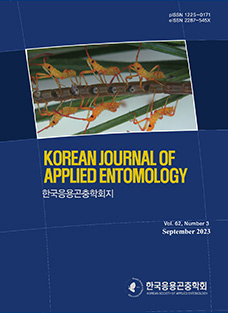



 KSAE
KSAE